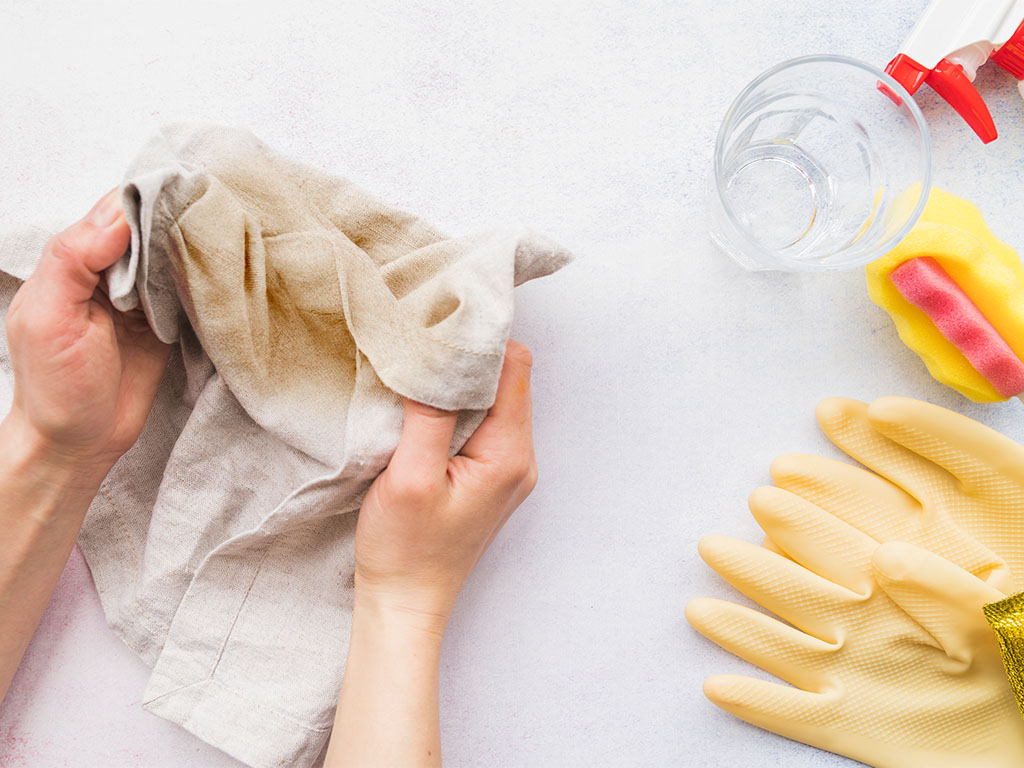
Spring cleaning isn’t just about sprucing up your home—it’s also the perfect time to give your favourite clothes some TLC. After winter, we may encounter the problem of yellowed laundry. Yellow stains can appear on white T-shirts, shirts, towels, or bed linens. However, they’re nothing unusual. So how can you breathe new life into yellowed laundry?
This problem is easy to fix—you just need to know how to whiten your laundry the right way without damaging the fabric. In this blog, we’ll take a look at tried-and-true tips that will help you say goodbye to yellow stains and extend the life of your textiles.
Why Does Laundry Turn Yellow?
Yellowing of laundry can happen for several reasons. Most often, it’s a combination of a few different factors:
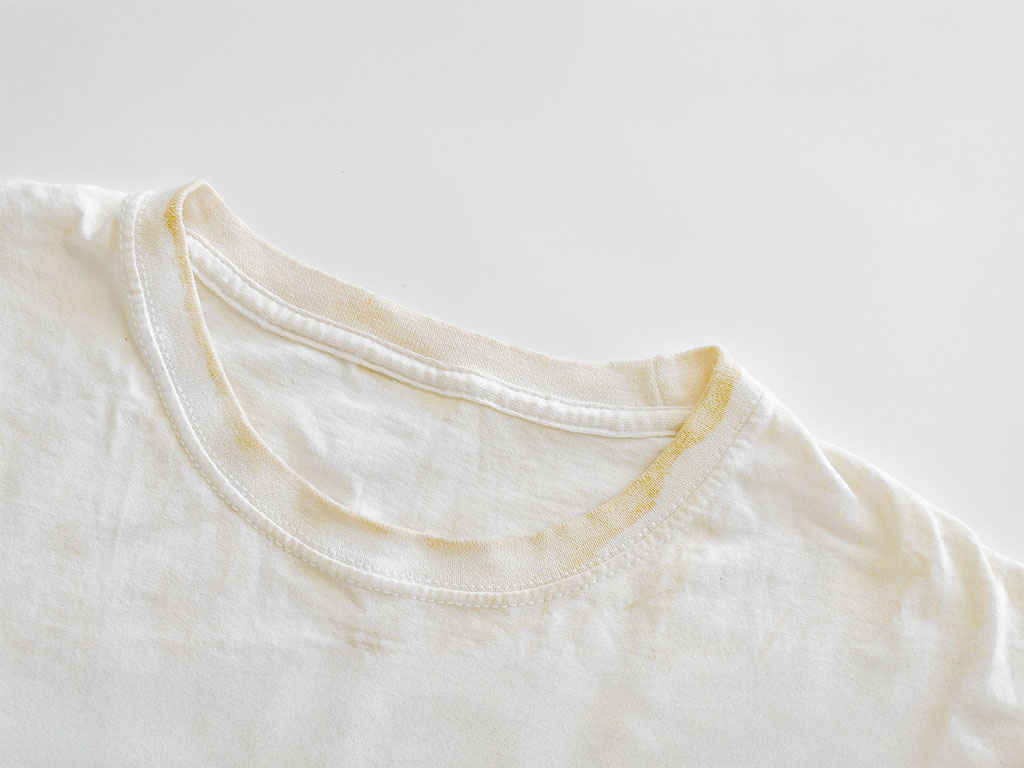
- Sweat and Body Oils – When wearing white or light-coloured T-shirts or shirts, sweat and natural oils from your skin can absorb into the fabric, leading to yellow stains—especially in the underarm area.
- Improper Washing – If laundry isn’t washed at a high enough temperature or with the right detergents, dirt and residue can build up in the fabric, causing it to yellow over time.
- Faulty Drying – Drying laundry in direct sunlight can cause it to take on a yellowish tint, as UV rays can damage the fibres. Excessive heat in the dryer can also scorch the fabric and lead to yellowing.
- Water Quality – Hard water with a high mineral content can lead to mineral buildup in fabrics, contributing to yellowing.
- Low-Quality Detergents – To effectively get rid of yellow stains, it’s important to use the right techniques and reliable cleaning products.
Let’s take a look at some specific tips for whitening your laundry.
- Using Bleach and Whitening Agents
One of the most effective ways to whiten yellowed laundry is to use bleach or whitening powder. These products contain powerful bleaching agents that effectively remove stains and restore whiteness. However, using them on coloured laundry is risky, as they will certainly damage the original colour of your clothes.
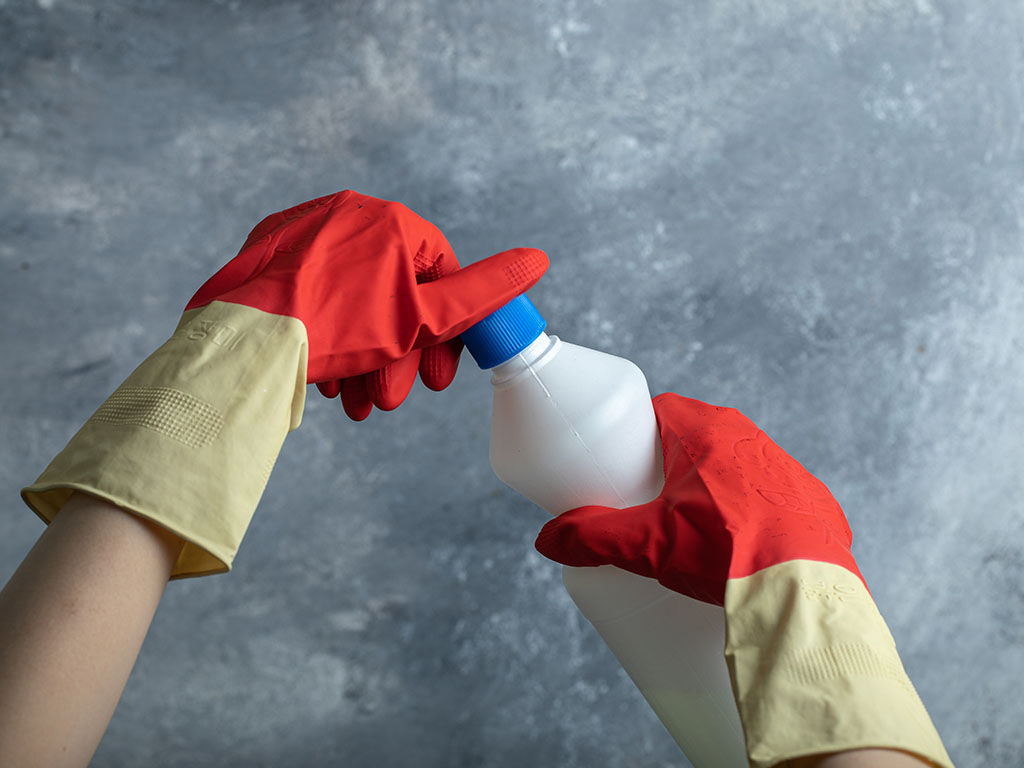
- Chlorine-Based Bleach – This bleach is very strong and effective for yellowed laundry. Always use it according to the instructions on the label to avoid damaging the fabric.
- Whitening Powder – Chlorine-free whitening powders are gentler and may be more suitable for delicate fabrics. These powders often contain oxygen, which gently cleans the fabric without causing damage.
To achieve the best results, it is recommended to pre-mix the bleach with water before adding it to the washing machine. This technique dilutes the bleach and prevents different shades of white from forming on the clothes. Diluting helps distribute the active ingredients evenly.
- Homemade Bleach Alternatives
If you prefer more eco-friendly and gentle methods, try one of the homemade bleaching agents. These are great alternatives to chemical products, which are effective but often contain harsh substances.
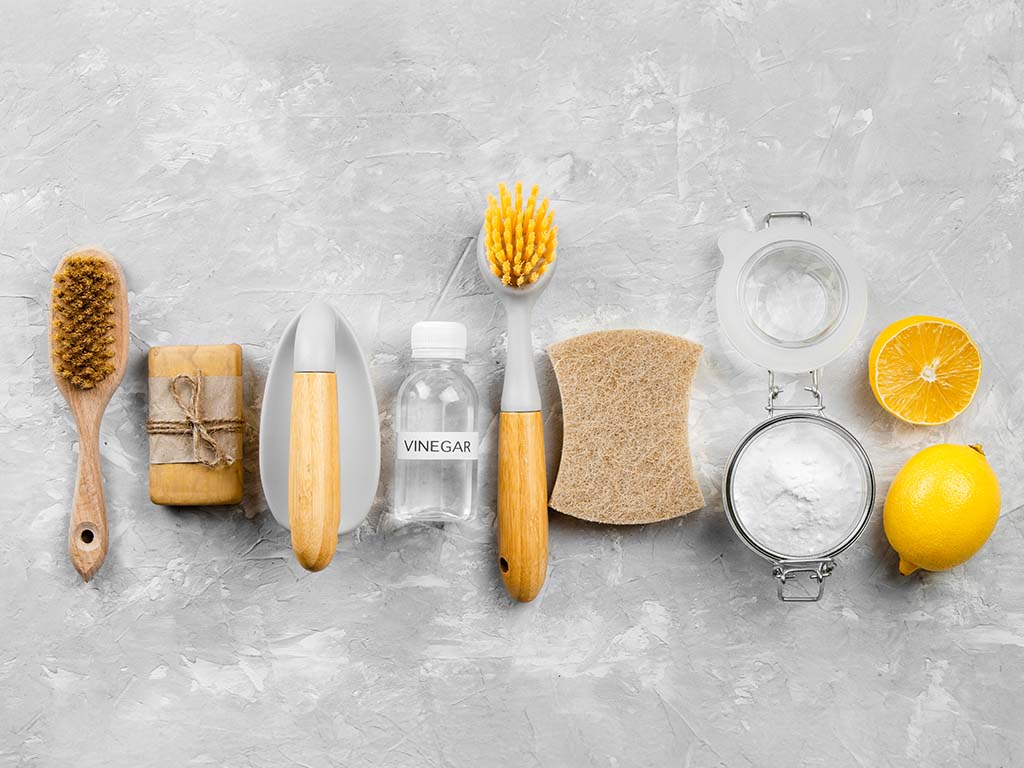
- Baking soda – Baking soda is an effective natural bleaching agent that helps remove stains and odours. Simply add half a cup of baking soda to the washing machine along with your regular laundry detergent.
- Vinegar – Vinegar is a great aid in laundry. It helps remove stains and neutralizes odours. Add 1/2 cup of white vinegar to the washing cycle to bleach your laundry and soften it at the same time.
- Hydrogen peroxide – Hydrogen peroxide is excellent for bleaching and disinfecting. You can add it to the washing machine or use it for pre-soaking your laundry. For 5 litres of water, just add about 1 cup of hydrogen peroxide.
These natural bleaching agents are not only environmentally friendly but also gentle on your fabrics. Before using them, always check their effect on a less visible area of the fabric. It’s possible that the material may not be suitable for the use of peroxide, vinegar, or baking soda.
- Correct Washing Temperature
When washing laundry, it's important to set the correct water temperature for different types of fabric. Washing at a low temperature can result in stains and dirt not being fully removed, which can contribute to yellowing.
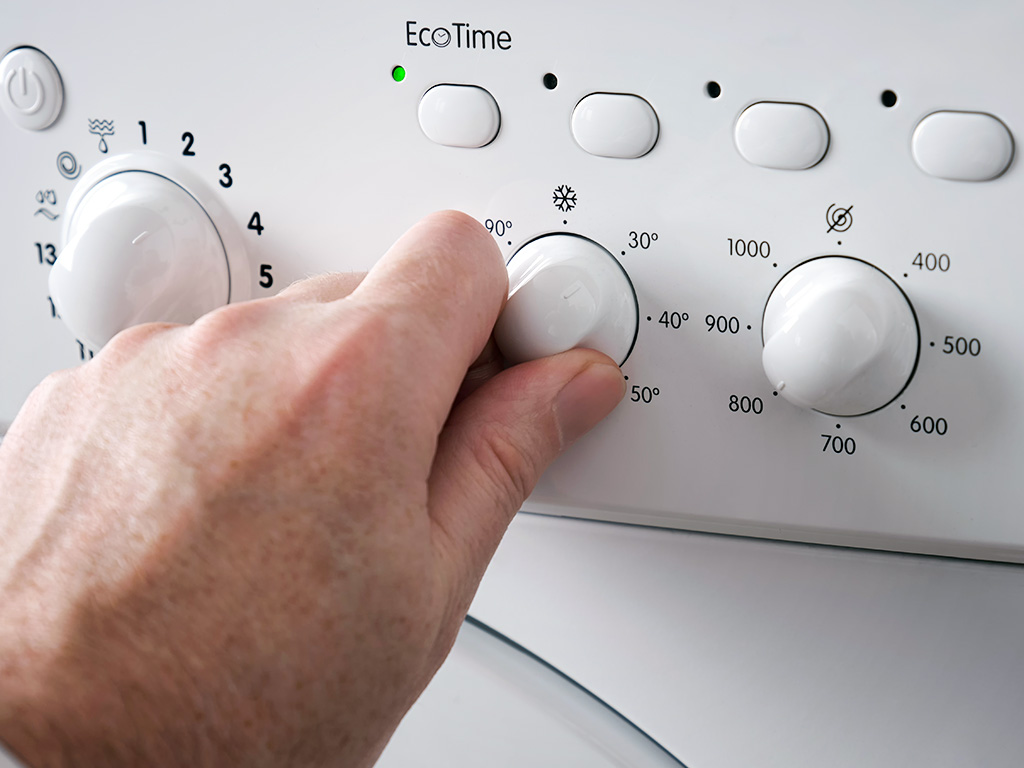
- A temperature of 40-60°C is ideal for white clothing, especially if it is heavily soiled. For heavy stains or yellowed laundry, you can use a higher temperature, provided the fabric allows for it.
- Washing at 90°C is only possible if the care label allows for it. This hot cycle helps remove even stubborn yellow stains. However, it is not recommended for regular use. High temperatures can remove dirt but can also damage the fabric structure.
- Drying Laundry In the Sun
Sunlight can be a great helper in whitening laundry. Sunlight has a natural bleaching effect that can reduce yellowing of the fabric.
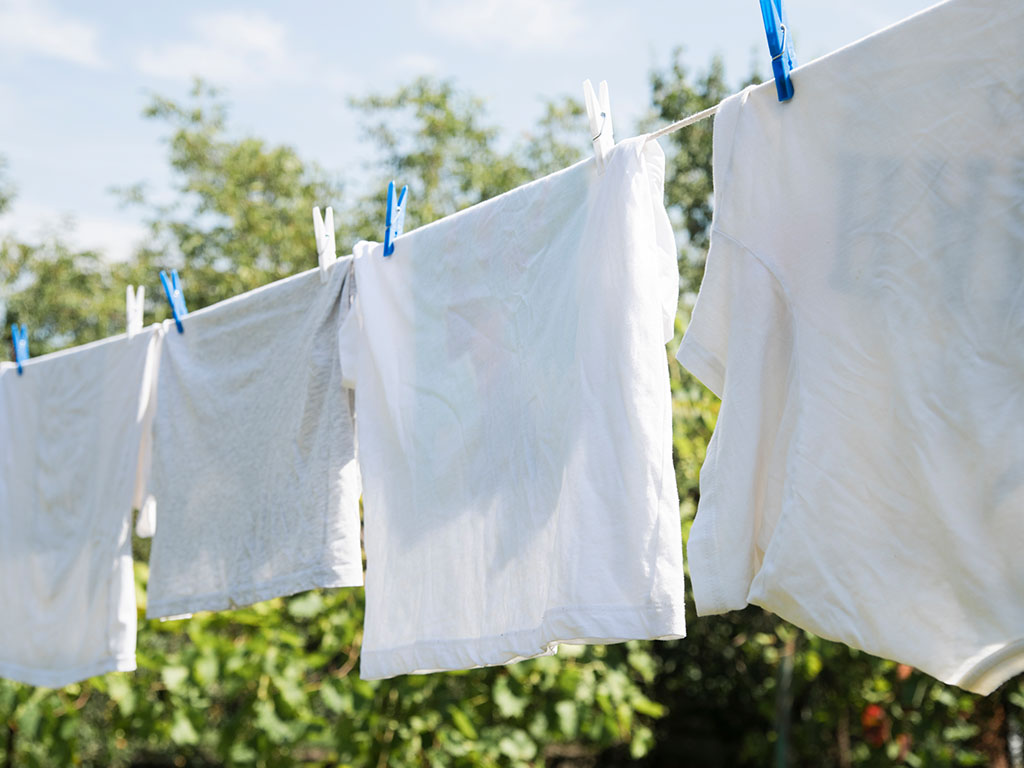
- Drying outdoors – If you have the option to dry your laundry outside, the sun will help whiten it naturally. White clothing will take on a brighter appearance when exposed to sunlight.
- Be cautious with delicate fabrics – Not all fabrics are suitable for drying in the sun. If you have delicate materials like silk or wool, it’s better to dry them in the shade to prevent damage.
When drying in the sun, don’t forget to turn coloured clothes inside out. This will help prevent unwanted fading. White clothing, on the other hand, can regain its brightness.
- Preventive Care for Laundry
To prevent yellowing of laundry in the future, regular maintenance is recommended.
- Washing immediately after use – Don’t store dirty clothes for too long. The sooner you wash them, the better you’ll be able to remove stains and dirt that could settle in.
- Using the right detergents – For white laundry, use detergents or gels specifically designed for whites, which contain whitening agents and protect the fabric.
Spring cleaning is the perfect time to get rid of yellowed laundry and restore its original bright colours. However, you need to use the right techniques and also know when the battle against stains is definitively lost. Don’t forget to use the correct washing temperature, choose the right cleaning products, and provide regular care to keep your white clothes looking perfect. At Puella, we’ll be rooting for you in this!
